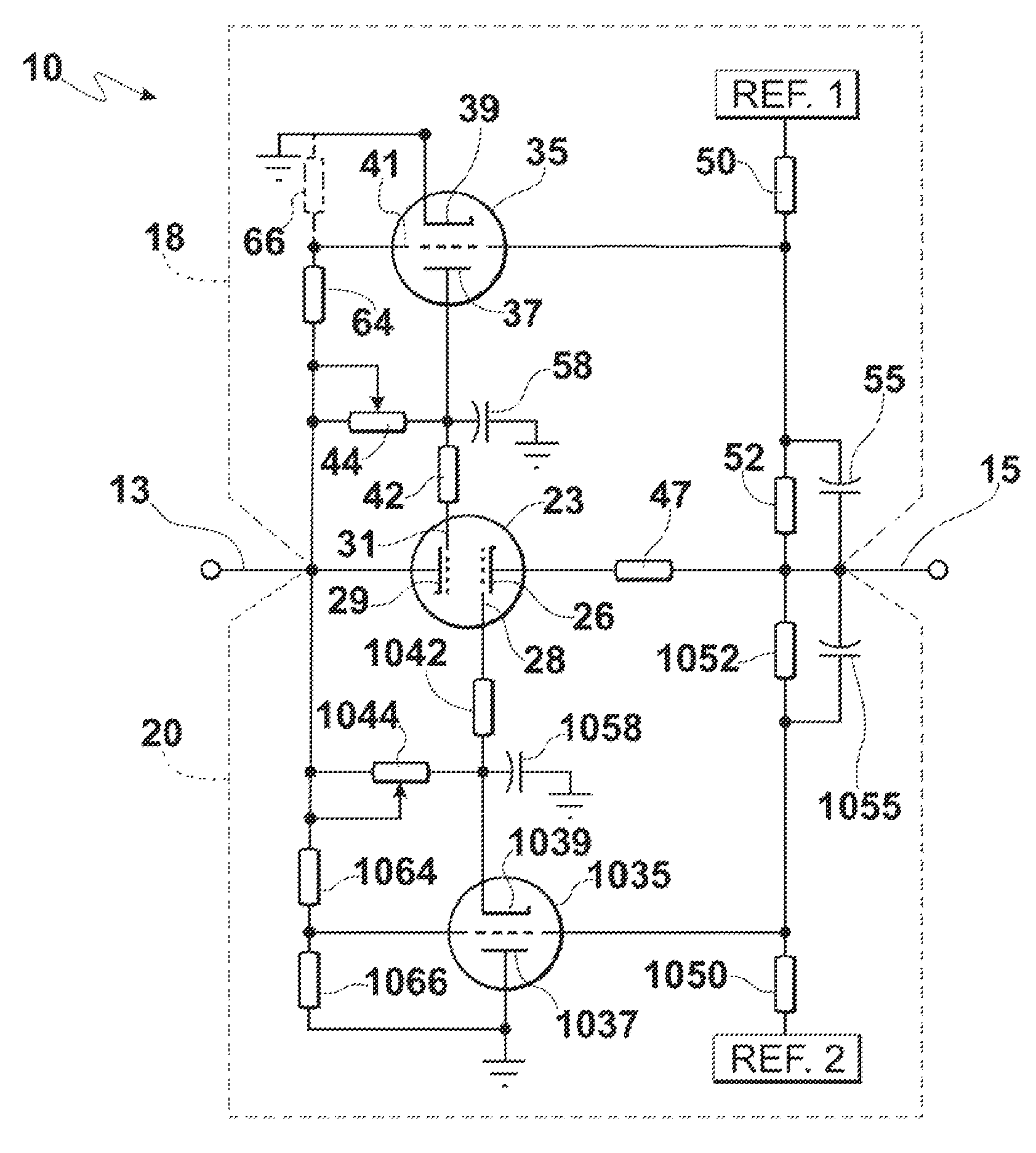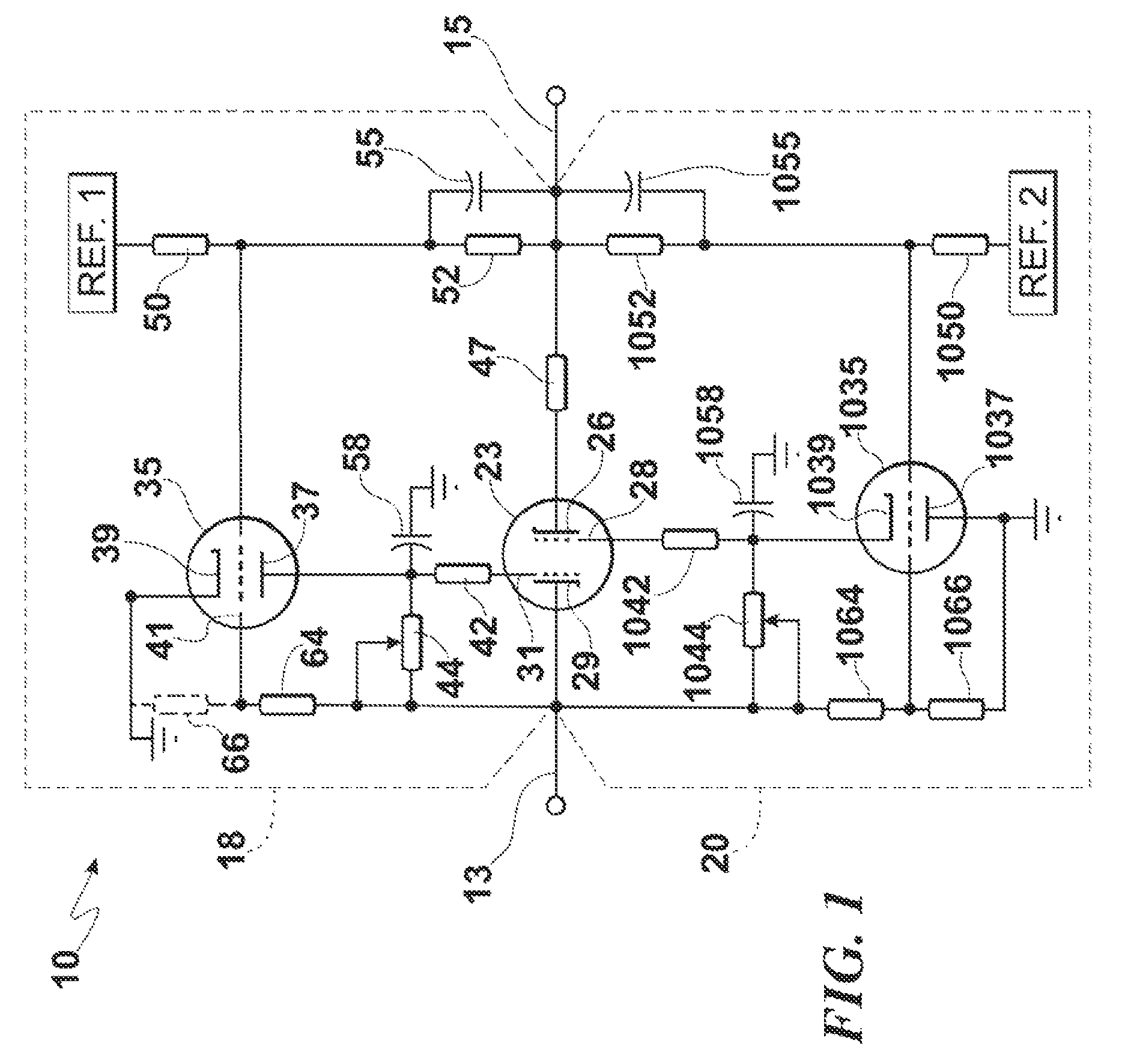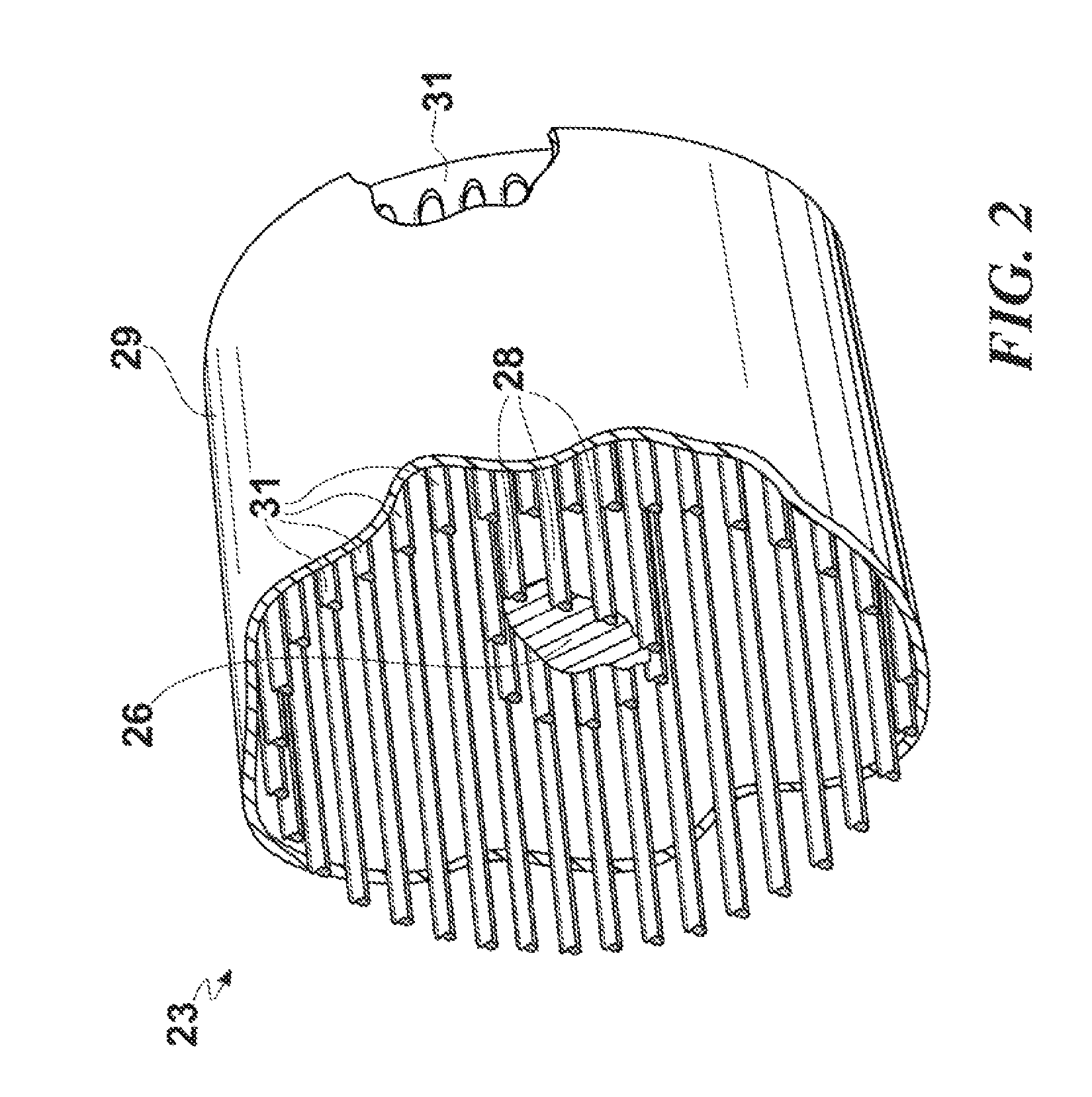High voltage high current regulator
a regulator circuit and high current technology, applied in the direction of vacuum obtaining/maintenance, feed-through capacitors, instruments, etc., can solve the problems of limiting fault current, creating cost overhead factor, and none of these techniques can meet the needs of the electric power industry, so as to reduce the overall size requirement of the vacuum enclosure, prevent internal electrical short circuits, and increase system reliability
- Summary
- Abstract
- Description
- Claims
- Application Information
AI Technical Summary
Benefits of technology
Problems solved by technology
Method used
Image
Examples
Embodiment Construction
[0035]A list of reference numerals and associated parts appears near the end of this detailed description.
[0036]The following definitions relate to terms that used herein.
Definitions
[0037]“Electrical power grid” means herein an electrical power and distribution grid for powering private residences, industry and government users. Typically, an electrical power grid will have a plurality of power generators and a means for transmission of electricity to a plurality of distribution substations, the function of which substations is to distribute power to private residences, industry and government users.
[0038]“Fault current” means a severe over-current condition.
[0039]“High current” means herein greater than 50 Amps.
[0040]“High voltage” means herein greater than 400 Volts AC.
High Voltage Current Regulator
[0041]In accordance with a first aspect of the invention, FIG. 1 shows a high voltage current regulator circuit 10 having first and second terminals 13 and 15 for being interposed in an...
PUM
 Login to View More
Login to View More Abstract
Description
Claims
Application Information
 Login to View More
Login to View More - R&D
- Intellectual Property
- Life Sciences
- Materials
- Tech Scout
- Unparalleled Data Quality
- Higher Quality Content
- 60% Fewer Hallucinations
Browse by: Latest US Patents, China's latest patents, Technical Efficacy Thesaurus, Application Domain, Technology Topic, Popular Technical Reports.
© 2025 PatSnap. All rights reserved.Legal|Privacy policy|Modern Slavery Act Transparency Statement|Sitemap|About US| Contact US: help@patsnap.com



